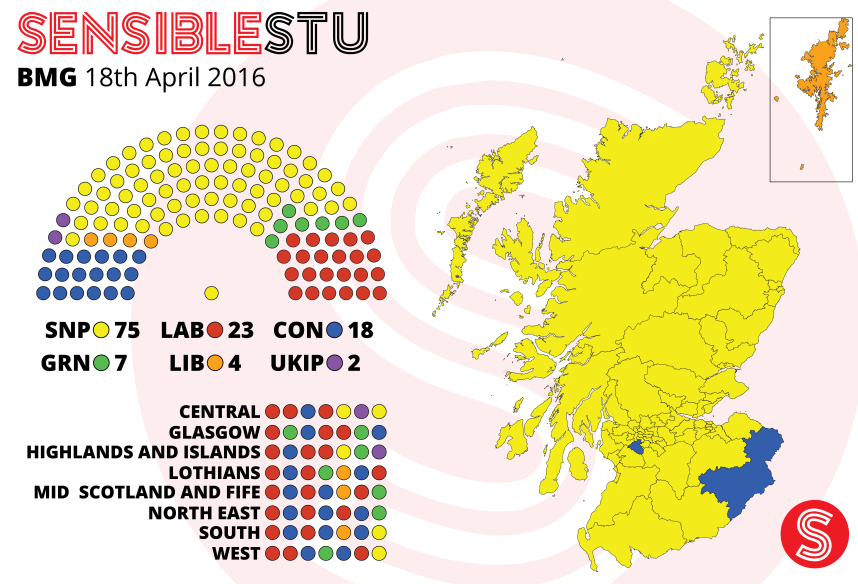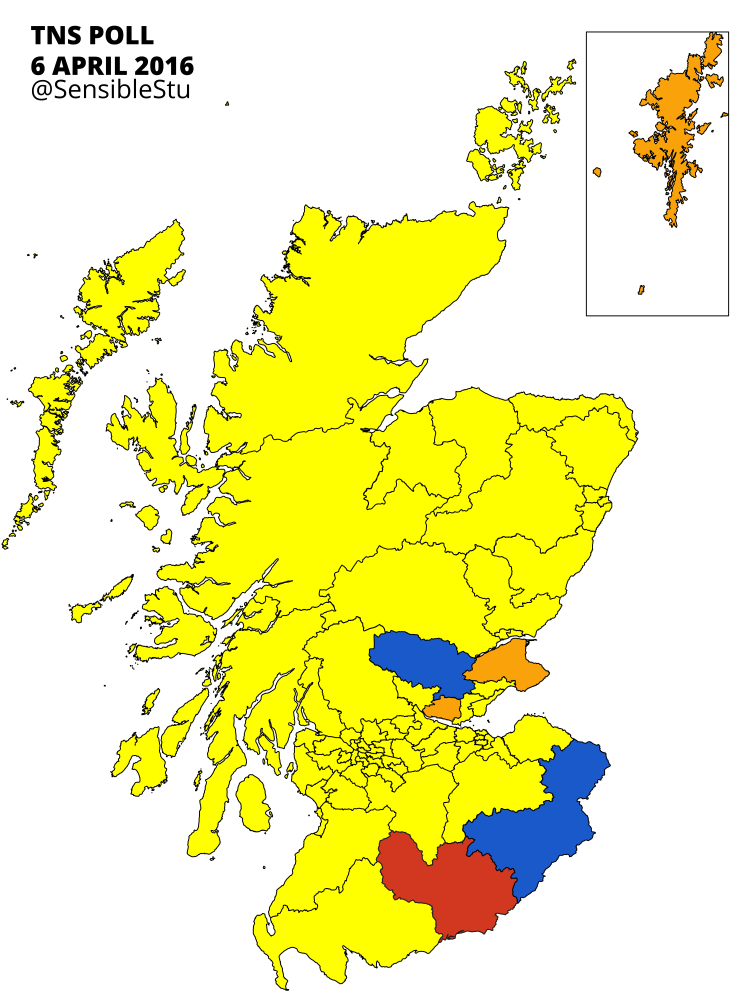Projection: SNP majority of 21, some relief for Labour, Tories stall

This week we see a new entrant to Scottish Parliament polling, BMG Research. With two weeks still to go, BMG show the SNP on 51% of constituency voting intention, to Labour’s 21% and the Tories’ 16%. On the regional lists, the SNP slip to 45%, Labour to 20%, and the Tories stick on 16%.
On BMG’s’ figures, the SNP look set to win 70 out of 73 constituency seats. While the Tories lose Galloway and West Dumfries, and Ayr, hang onto Ettrick, Roxburgh and Berwickshire, and gain Eastwood from Labour. The Lib Dems lose Liam McArthur in Orkney, but retain Tavish Scott in Shetland.
The regional list throws up a few results that look somewhat anomalous: it seems inconceivable that Labour wins three seats in the Highlands and only two in Central Scotland. Labour likely wouldn’t regard a tally of 23 seats as being too bad, though certainly on the lower end of that party’s hopes. The Tories’ hopes of becoming the Scottish Parliament’s main opposition would be dashed according to BMG, modestly padding their seat total by three. On BMG’s numbers, the 6th of May will be a disappointing one for Labour’s Ken Macintosh, Elaine Smith, and Cara Hilton.
The Greens pick up two in Glasgow, as well as one each in a further five regions, bringing their total to seven. The Lib Dems lose their seat in the North East and gain one in Lothians, bringing their total to four. In common with most other pollsters, BMG shows UKIP picking up a seat in the Highlands and Islands, as well as a seat in Central Scotland. It’s difficult to gauge RISE support on the back of BMG’s polling, as they’re not included in the prompt – however support for “others” appears to be negligible.
On these numbers, Labour only loses Dumfriesshire by a whisker (0.14%) – with their next most promising hopes being Cowdenbeath, East Lothian, and Dunfermline.

 Labour (and the Liberal Democrats) have called the SNP’s bluff, by proposing a 1% tax increase in order to offset cuts to public services. Surely, the left-wing SNP warmly embraces slightly higher income taxes over austerity? It seems not, and the SNP’s spin machine has gone into overdrive, inventing new meanings for words, which hitherto had a commonly understood meaning.
Labour (and the Liberal Democrats) have called the SNP’s bluff, by proposing a 1% tax increase in order to offset cuts to public services. Surely, the left-wing SNP warmly embraces slightly higher income taxes over austerity? It seems not, and the SNP’s spin machine has gone into overdrive, inventing new meanings for words, which hitherto had a commonly understood meaning. SNP: 71 (+2)
SNP: 71 (+2)